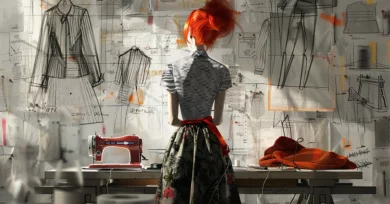Jewish and Christian art has a long history. Every artwork has a story of its own, which conveys a different tale to every individual. In this article, we will be dealing everything that an art enthusiast or a general observer of art needs to know about the jewish and Christian art. So, keep reading the article till the end as we give you a literal walkthrough to Jewish and Christian art.
Jewish Art:
Jewish art has its own story spanning back to centuries, which is inscribed in the scriptures. However, the scriptures were called “the smallest of all the nations,” whose small part of religious architecture was placed beside other scriptures from Christendom, Islam, and Buddhism. However, considering the population of Jews the small word isn’t right. Today, the population of Jews is somewhere around fourteen million, and the same number existed previously also, even before the massacre of the six million in Europe. Also, during the dissolution of the communities across Europe and the Arab world during the 1940s. This figure is a numerical highpoint. Hence, the inclusion of Judaism in the history of Jewish art would be a bit difficult considering only the demographics. Hence, Jewish art has a wider history than this
National Style of Jewish Art:
Well, every art form from a continent has a national style. Jewish art is no different. Claiming of national style was difficult for the Jews. During the establishment of modern Israel around the year 1948, the Jewish art’s claim as a national identity or national style of art landed primarily on nationalism. The primary categories of architecture during the nineteenth and twentieth centuries reflected the constructions of architectural history and style. However, Jewish art was primarily based on minority architecture, reflecting their minority existence.
As per modern scholars, the Temple of Soloman, constructed around 900 BCE, was a typical near-eastern temple. However, the Art Deco that was constructed around the twentieth century was a testament to the great synagogues. Even on the level of quality, it is said that Jewish architecture is hard to place on the list of great religious architecture in the world.
Now that you all have a good idea about the minority existence of Jewish art, which leads the architectural quality to downfall. It’s important to trace the longevity of the Jewish art. So, head to the next section of the article to trace more history of Jewish and Christian art.
Longevity:
Well, the Jews were lacking in health, territory, and wealth which led to longevity. The cultural heritage of the Jews can be traced back to the biblical patriarchs such as Issac, Abraham, and Jacob. Along with these biblical patriarchs, their cultural heritage is also linked to the land of Israel, an unbroken chain spanning over 3000 years. However, one cannot claim that Jews were less in art and culture. Although they were marginalized, they maintained rich mimetic traditions across the empire, which makes up for the modern Western world. Not only that, but they also maintained a book culture that, considering their stature in the empire, was quite astounding but ultimately reflected their sense of cohesion.
From the olden days to modern times, the Jews traveled from one Persian community to another, spreading across their religious culture. Their travel spanned from Persia to Iran, and it covered all the aspects of spreading their knowledge of religious art. They even tried different types of food, which can categorized as “Strange,” dressed in “funny” attire, and practiced “strange” local liturgical customs
Study of Jewish Art and Architecture:
The proper academic study of Jewish art started from the eighteenth century onward when the Christian Hebraists and bible scholars showed their interest in biblical architecture. This includes the Mosaic Tabernacle, the Solomonic Temple, and the Herodian Temple. The modern architectural buildings were included in the study a bit longer for scholarly interest.
However, the proper inclusion of all the facets of Jewish art started in the nineteenth century. This included the architecture. One can trace the Jewish art from the post-war New York architectural survey, where comprehensive surveys were written both by historians and architectural experts. In recent years, Jewish visual culture has been studied in the Judaism academic culture. Cultural historians have now shifted the focus to study the “minority” architecture of the Jews, which in the previous generations was neglected.
Christian Art:
The beginning of Christian art started in the third and second centuries. The testament was from the graven images which proved the existence of Christian art. Hence, it is important to know about the Christian art. Images that are used to showcase Christian art will be a contending issue throughout the history of Christian art. However, the emergence of Christian art started in the early church primarily due to the important role that is played by the Greco-Roman Culture. As the Christians gained converts the use of images was brought by the new Christians to show their previous cultural experience.
Biblical significance was highly seen in the Christian art. This was found in the death of Junius Bassus, a Roman praefectus urbi, also called the high-ranking government administrator, who died in the year 359 BCE. The scholars are of the opinion that before he died, he converted to Christianity, and shortly before his death, there was the inclusion of Christ and the scenes from the Bible.
Death and Resurrection- Significant Theme:
Well, the Christian art was highly significant in the Christian art. One of the most striking features of the third century’s Christian art was that no pictures were used, which later became a major part of inclusion in modern Christian art. The theme of death and resurrection was not directly represented through central Christian images. But a significant testament was retrieved from an old series of images. Some of the traits of such images that give out the significance of the theme of death and resurrection are:
- The Three Hebrews in the Fiery Furnace
- Daniel in the Lion’s Den
- Moses striking the rock
Folks, these images conveyed the message of the existence of death and resurrection in Christian art.
Canonical Texts and New Testaments:
Another significant part of Christian art is the existence of canonical texts. The major difference between Christianity and public cults is faith’s central role in Christianity and the importance of orthodox beliefs. The struggles primarily mark the early church’s history for establishing the canonical set of texts and the establishment of the orthodox doctrine.
The questions about the nature of the Trinity and the Christ would always continue to challenge the religious authority. However, within the civic cults, there was no evidence of central texts. Similarly, there was no existence of orthodox doctrinal positions. The Christian emphasis on the orthodox doctrine can be primarily found in the world of Greek and Roman. It was dominated by the role of philosophy. The ancient philosophy played a major part in the formation of Christian theology
Early Representation of Christ and Apostles:
One of the most important parts of understanding Christian art is the representation of Christ and the Apostles in early Christianity. The early representations of Christ were found in the catacomb of Domitilla. It shows the figure of Christ flanked by a group of students or disciples. However, to understand this image, one needs a keen eye, especially those with experience with the later Christian imagery. They might take it as the image of the Last Supper. However, the image does not weave any tale conveyed to the viewers but instead gives the message that Christ is the biggest teacher.
Christ was also represented holding a scroll in his left hand, and his right hand is outstretched in the d locutio gesture or the gesture of the orator. The dress, scroll, and the gesture of authority all represent the authority of Christ, who is primarily surrounded by his disciples. Christ is thus portrayed as a philosopoher who is surrounded by his students of disciples.
Conclusion:
The history and the evolution of Jewish and Christian art is long and creative. With the evolution of architecture, the modern study of Jewish and Christian art elevated. This has given the world a better view of the art style of both communities. In this article, we have briefly traced Jewish and Christian art, which reflects the world from different perspectives. Right from history to the present. That’s all, folks. I hope the article will help you to get all the information you need.
Read More:






